====== Plumes. ======
//
**It took years before our scientists realized the plumes weren't a natural phenomena but in fact attempts of communication by the native species inhabiting Xingqiou Ding a planet named after the famous professor Ding Jindong who singlehandedly mapped out 3000 systems with planets in the Goldilocks zone most of them proved to be carrying or developing life via the mass swarm probing efforts launched after the great cataclysm had left only 1/10 of humanity alive.**
//
//**The probes had been roving Xingqiou Ding for the better part of 3 years without finding signs of intelligent life, they were very good at hiding. A distinct advantage taking the menacing predators roaming the surface taking out most of the self replicating drones before they had much chance to report back leaving the surface littered by odd bits and parts picked up by the locals.**
//
//
**The indigenous population realized the drones had to be from another world. But open communication would be fraught with too big danger for anyone to go through with numbers dwindling and only physical signalling possible, so another plan was brought to life. **
//
//
**Over time they had collected multiple energy cores from drone litter and they would use them to ignite 3 of the old resovoirs. **
//
//
**The plumes arising from one would in itself raise interest for the foreigners however 3 would for certain attract more attention especially if lit simultaneously. **
//
//
**It was a dangerous and daring plan. A party of 6 would be needed for the lighting of each plume. The trek would last for about 6 circulations of Yuliang the watcher.**
//
//
**This is their tale.**
//
====== **Game setup:** ======
Number of players: 1-4
BOARD 16x16 SQUARES (2cm sides) (or 28x28)
**Environments:**
The planets environment is represented by multiple types of landscapes strewn out on the playing field.
The types are:
WATER - On the board per default
2 PLAINS
2 FOREST -1 in movement
1 SWAMP -3 in movement
2 MOUNTAIN CHAINS -2 in movement
1 DESERT -1 in movement, -1 to health of each tribe member located in desert per start of turn while located in desert
1 LAKE -3 in movement -2 in health per start turn per tribe member located in lake
**Placing environments:**
Each of the environments consist of 4X4 tiles that are to be laid out on the board.
Each type of environment has it's own flora and fauna and traversebility that the indigenous players either need skill to traverse or tools, or both.
Each environment will be placed on the planet before the game starts by the environment cards being handed out to the players face down, the players will then place the environment cards on the board.
Each 4X4 grid is allowed to overlap with two tiles, more tiles only given the reason for overlap is to keep it inside planet surface as per board layout and there is nowhere else to put the environment, though overlap should be avoided for grids unless absolutely needed to keep aforementioned rule regarding overlap.
**Hive & Refinery Complex:**
Hive (tribal home) placement and refinery placement, is done by handing out the home and refinery cards face down placing them on board together with the environment tiles, once all the refinery and hive tiles are placed they are flipped over and hive and refinery tiles placed accordingly - Location of these cannot be altered once placed on board.
Once home hive for each tribe and refinery complexes are placed environments are flipped over so players can see the environments.
Home and hive placement is done by a random player according to roll of 4 sided dice. Highest roll places home and refinery tiles as well as makes sure once environments are revealed that permanent game pieces showing hive and refinery are placed on the board.
Once environment is uncovered the rest of the tiles are divided out - Again they are laid out on board face down. Each player gets an equal number of tiles as far as possible and in turn lays out the remaining tiles. These are the Monster and Tech Tiles
**Additional regarding Tech, Monster and blank tiles:**
There are enough tiles to entirely cover the board once Hive and Refinery tiles have been laid out - Totally 30 of the tiles are Monster tiles, 30 are Health Pack tiles and each set of Tech tiles (labelled I, II, III, IV, V) number 9 of each type. The rest of the tiles (for now) are left blank and represent nothing found but are to be laid out on the noard nevertheless.
As a general rule at least 12 of the tiles must be placed either in lake or in ocean when laid out.
Tiles naturally cannot be placed on Home Coordinate or on Refinery Coordinate - No other rules regarding placement otherwise
Tiles are placed on board face down and will only be turned when landing on a tile.
At any given time only 1 pack and 1 solitary monster can roam the board simultanously, if a tile is flipped with a monster said monster will be startled by the arrival and re-placed on board according to re-placement roll (need to figure out that one, multiple monsters cannot be re-placed, in such an occurrance a re-placement is made till the monster finds a new resting place.
====== Player Skills - Characteristics & number of pieces: ======
**Special skills:**
Each tribe can have 1 special skill in one of the following negating the environmental effects health and move wise.
1) Mountaineering
2) Swimming (ocean & lake)
3) Sailing (ocean & lake)
4) Water collecting (desert)
Upon start each tribe rolls a d4 and the face value decides what skill the tribe gains.
**General tribal skills:**
Weapon / Fighting skills: close combat, long range weapons
Health: General health index of tribes members at onset of quest.
Stamina: Move bonus.
**Player Pieces:**
Each tribe consist of either a group piece or 6 separate tribe-member pieces (total 3/18) these are pieces that can be moved about the board in all directions on board given they have the stamina and health to do so.
Number of moves for each party are decided upon by the throwing of a x sided die, the pieces can be moved as a group or one can split the moves between individual pieces splitting up the group for instance if under attack and trying to throw off the attacker (see scatter move). This allows for maximum flexibility movement wise and makes for efficient searches. But strenght in numbers can be preferable when meeting one of the top predators of the planet.
====== Other inhabitants - NPC's ======
In addition to the 3 tribes the planet is populated by a number of indigenous lifeforms hostile to our tribes. These are divided into "types".
**Monster type 1:**
Flying Monster - long range
Speed: 1xd12 moves at it's turn if not engaged in combat in specific location
Attack strenght: 1xd4
Number of attacks per turn: 2
Predator sensory range: X tiles
**Monster type 2:**
Heavy predator
Speed: 1xd4 moves at it's turn if not engaged in combat in specific location
Attack strenght: 1xd8
Number of attacks per turn: 1
Predator sensory range: X tiles
**Monster type 3:**
Pack hunter - group of 3-6, hearding hunters
Speed: 1×20 (divided as equally as possibly between all pack members.) moves at it's turn if not engaged in combat in specific location
Attack strength: 1xd4 per pack member in a specific coordinate on board
Number of attacks: 1 per member
Predator sensory range: X tiles
**Monster type 4**
Solitary predator plains and mountains
Speed 1xd6 moves at it's turn if not engaged in combat in specific location
Strenght 1xd8
Number of attacks: 1
Predator sensory range: X tiles
**Monster type 5:**
Water dweller - solitary
Speed 1xd4 moves at it's turn if not engaged in combat in specific location
Strength 1xd4
Number of attacks: 2
Predator sensory range: X tiles
**Monster type 6:**
Water Dweller
Speed: 1xd6 moves at it's turn if not engaged in combat in specific location
Strenght: 1xd6
Number of attacks: 1
Predator sensory range: X tiles
**Monster type 7:**
Desert solitary
Speed: 1xd8 moves at it's turn if not engaged in combat in specific location
Attack strenght: 1xd4
Number of attacks per turn: 1
Predator sensory range: X tiles
**Monster type 8:**
Desert pack
Speed: 1xd6 moves at it's turn if not engaged in combat in specific location - per pack member
Attack strenght: 1xd4 per pack member
Number of attacks per turn: 1 per pack member at specific coordinate
Predator sensory range: X tiles
**Monster type 9:**
Insect - fire ant like - Can be found everywhere except in water
Speed: 1xd4 moves at it's turn if not engaged in combat in specific location
Attack strenght: 1xd18
Number of attacks per turn: 1
Predator sensory range: X tiles
======**Game Mission:**======
The tribes have found out there is an alien presence on the planet in the form of probes not indigenous to the planet.
These probes are attacked by indigenous lifeforms, their destruction has strewn technology across the planet surface and the tribes are gathering this technology in order to attempt to rebuild civilization, however finding progress is too slow a contact attempt seems like the best chance to in some way save their culture.
It is decided that all 3 tribes need to go out and recover technology and build incineration devices that can restart the core power stations in the 3 remaining ore Refinery Complexes sending energy into the planetary weather control system, but this time under more controlled circumstances not sparking a planetary catastrophe like the last time it was tried and this time in order not to control weather as such but send energy plumes into the atmosphere that will attract the visiting probes and hopefully lead to peaceful contact as the probes seem to try and avoid confrontation and only if threatened seem to strike back against an aggressor.
Each tribe is assigned the mission to first retrieve 5 different "Tech Parts" and bring them back to the hive - Tech parts are numbered 1 - 5. once a tech part is found it must be brought back to the hive. If a tech part is recovered the uncovered finding a similar tech part is to be left in place where found.
Once enough technology has been gathered it is possible to build an ignition device (i.e. once Tech Piece 1-5 are recovered and brought back to the hive).
When bringing back tech pieces these are represented together with group or an individual tribe member as a piece on the board.
The ignition device then has to be brought to the designated refinery complex - once successful tribe may if other tribes are unsuccessful attempt to assist other tribes if any remain, or take over other tribes mission and fulfill it in case tribe has been decimated.
**The refinery complexes are marked as:**
REFINERY I
REFINERY II
REFINERY III
Each complex belongs to a specific tribe and the ignition device must be brought by that specific tribe to the designated complex. And are placed on the game board as explained elsewhere under board setup.
**Success criteria:**
The game is won with a 100% success if all 3 refinery complexes have their ore lit and are brought online
The game is a 75% succes if only 2 refinery complexes are lit are brought online
The game is a minor success 25% if only 1 refinery complex is brought online.
The game is lost and a failure if none lit and tribes have been decimated
Number of players:
At least one player needs to control the indigenous tribes as well as monsters etc.
TECH TO COLLECT:
TECH 1
TECH 2
TECH 3
TECH 4
TECH 5
====== Rolls & behavior: ======
**Regular move:**
A dX is rolled and tribe moves according to roll in any player chosen direction, however it is illegal to reuse tiles during a move. Once moves are used up if a card is on the coordinate where tribe ends up the tile is turned over.
If a predator is uncovered tribe is allowed a scatter roll, if a tech piece is recovered and tribe does not have said tech piece tribe members are tasked to bring said piece back to the hive according to the rules of regular move. If Tech is already in the posession of the tribe tile is put back down face down and tribe moves on in their quest for tech at the next turn.
**Scatter roll:**
When a card is turned and a type of predator appears, player turning the card is allowed a scatter roll in order to attempt an escape N+1 on dice (dx) means you will have a chance to escape moving N+1 steps on the board according to the outcome of the roll. The steps may be either divided between all the remaining characters on a grid coordinate or used moving the pieces as a group.
One of the other players either after a scatter roll or a combat roll then has to take on the role of the predator, and either enter pursuit or combat. The player who had the previous turn will roll on behalf of the predator.
Predator Roaming Rolls & Hunt Roll:
If scattered pieces are out of Predator sensory range, predator has to make a random move in a direction, the move will be in direction North/South/East/West, dependent upon a roll of the d4 dice (1 being direction North, 2 being South, 3 being East, 4 being West) and the length of the move will be according to a roaming roll of the dX.
If a roaming predator does not detect anything in sensory range after its roam roll, for as many turns as there are number of players the predator gets a turn that comes between each players turn if it has been awakened going for one turn of rolls around the table.
The turn to control the predator befalls the last player before the player who has the turn to roll the die.
After having roamed for one complete turn and if not getting into sensory range giving it a hunt roll the predator card is placed at the grid coordinate where it ends up.
This may be on a coordinate that already has a card or a position one needs to get to at a later stage in the game, so one might need to have to risk stirring the predator again.
If a predator comes into sensory range during it's roam roll a hunt roll must be rolled with the dX.
The predator then has to steer directly towards the closest indigenous units in range in order to attack.
If a scatter roll has already been performed by any of the indiginous units, they will have to fight the predator that is closing in.
Combat Roll:
If one does not wish to do a scatter roll one can choose a combat roll with the Dx.
Move up into combat & monster description
**Pack behavior.** If a pack predator appears the pack is placed within 1xd4 of the player uncovering the pack
A pack movement roll is then rolled and pack either moves as group if within attack range or roll is divided between pack members in order to allow pack to flank player
A standard set is a d4, d6, d8, two d10s (used for percentile roll where one is the tens place and the other is the ones place), a d12, and a d20.
====== Images ======




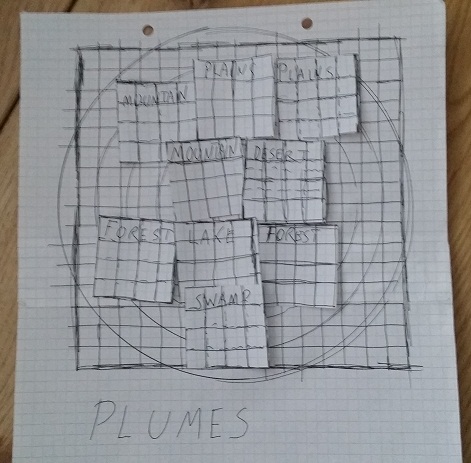


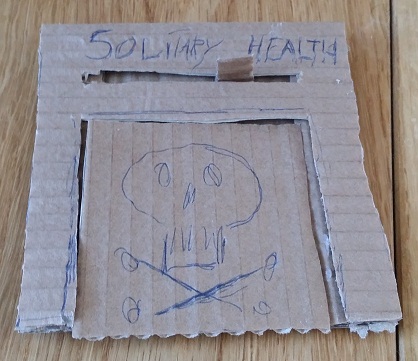

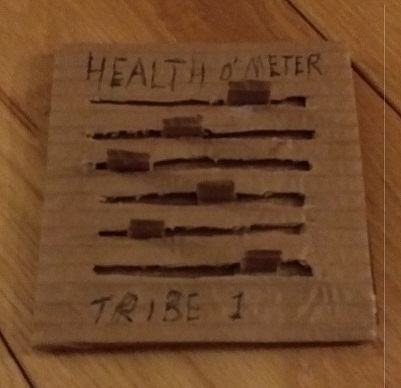
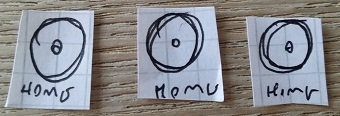



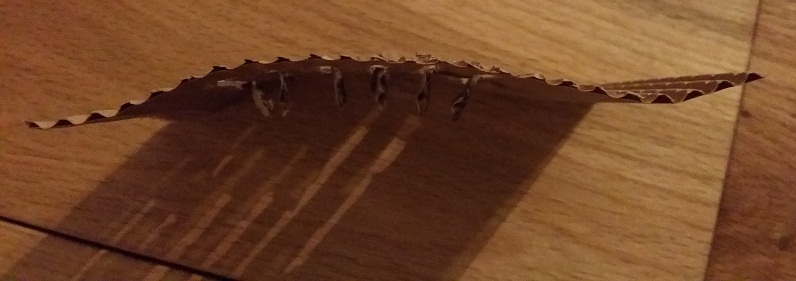
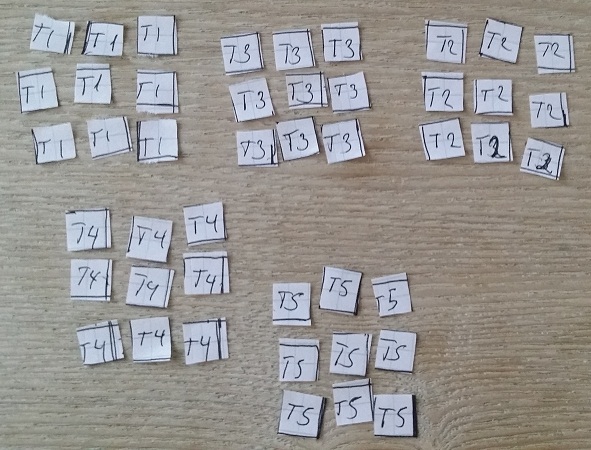 ======Materials======
It is the intent to first create a test board - Plain drawing paper 30x40 cm (A3) - later mods will incorporate engraved player board (see accessibility)
The cost of 1 said test board will be at a minimum:
1 board made from materials in sizes up to 40x60 cm 3 mm thickness (having a 16x16 grid 2,5 cm squares will require a board size of at least 40x40cm)
I expect from the cheapest material this can be done for 2x25 DKK and up per attempt.
Other materials can be Acryllic - Transparent will run 2x60 DKK and upward to for instance 200 DKK for mirror like materials.
Acryllic will be used for final prototypes as the wish is to enable players to design their own underlays for both testing out new game variants and new gametypes (imagine a type of squared prototype board.
Why this production method involving laser cutting / engraving ? This has to do with accessibility (see below).
COST: 10 x boards first variant 2x 250 DKK - 500 DKK
For laser cutting and engraving drawings in svg are needed (cuts have a thickness 0,01 mm) other thicknesses are engraved into material.
Expected maximum budget for graphic design XXXX, this includes board, tiles, player pieces, packaging etc.
COST: 10 boards (later prototypes) acryllic 2x600 DKK i.e. 1200 if cheapest, but let's triple that figure in case we need more expensive materials so 3600 DKK
All tiles, players, monsters, etc. are in the first prototype round furniture leg pads bough at supermarked on sale and tiletype is stamped onto the bottom.
The cost of the tiles has been about 300 DKK - Later prototypes will be laser cut and engraved.
Price of tiles if acryllic and enough for 10 boards 3600 DKK
A set of AD&D die is roughly 70 DKK per set so if I manage to make 20 boards without fault it would be nice to be able to give them away and thus 20 x 70 = 1400 DKK is needed for die.
A box is needed as well for the game, producing it within the realm of this kickstarter is possibly going to be a major hurdle cost wise, so let's keep that as a stretch goal and instead for the basic kickstarter go with a unique box design utilizing what we can do with a laser cutter, some wood and acrylics.
The price of such a box will be similar to the price of the board x 3 + some fittings, lets estimate a box price of wood material + 25 DKK in fittings that gives us a price of 3x25 wood + 25 DKK fittings = 20x100 - i.e. 2000 DKK
Inset printing of rules etc. also in braille, 20 DKK per set. Write to Susanne & Ole our two blind betatest coordinators for an estimate on printing price per A4 page.
**Stretch goal (if kickstarter)** - Production and printing run of standard package:
Here we have two possibilities, if we do not reach the stretch goal there will be a need to identify a box design type that is usable and then simply having graphics printed on stickers or other material and then put on the outside of a box, not optimal but doable.
Having to buy around 1000 boxes will run upwards toward 2800 US$ 16.000 DKK and is the minimum production run possibility identified so far..
Here are a couple of box manufacturers we could look at:
======Materials======
It is the intent to first create a test board - Plain drawing paper 30x40 cm (A3) - later mods will incorporate engraved player board (see accessibility)
The cost of 1 said test board will be at a minimum:
1 board made from materials in sizes up to 40x60 cm 3 mm thickness (having a 16x16 grid 2,5 cm squares will require a board size of at least 40x40cm)
I expect from the cheapest material this can be done for 2x25 DKK and up per attempt.
Other materials can be Acryllic - Transparent will run 2x60 DKK and upward to for instance 200 DKK for mirror like materials.
Acryllic will be used for final prototypes as the wish is to enable players to design their own underlays for both testing out new game variants and new gametypes (imagine a type of squared prototype board.
Why this production method involving laser cutting / engraving ? This has to do with accessibility (see below).
COST: 10 x boards first variant 2x 250 DKK - 500 DKK
For laser cutting and engraving drawings in svg are needed (cuts have a thickness 0,01 mm) other thicknesses are engraved into material.
Expected maximum budget for graphic design XXXX, this includes board, tiles, player pieces, packaging etc.
COST: 10 boards (later prototypes) acryllic 2x600 DKK i.e. 1200 if cheapest, but let's triple that figure in case we need more expensive materials so 3600 DKK
All tiles, players, monsters, etc. are in the first prototype round furniture leg pads bough at supermarked on sale and tiletype is stamped onto the bottom.
The cost of the tiles has been about 300 DKK - Later prototypes will be laser cut and engraved.
Price of tiles if acryllic and enough for 10 boards 3600 DKK
A set of AD&D die is roughly 70 DKK per set so if I manage to make 20 boards without fault it would be nice to be able to give them away and thus 20 x 70 = 1400 DKK is needed for die.
A box is needed as well for the game, producing it within the realm of this kickstarter is possibly going to be a major hurdle cost wise, so let's keep that as a stretch goal and instead for the basic kickstarter go with a unique box design utilizing what we can do with a laser cutter, some wood and acrylics.
The price of such a box will be similar to the price of the board x 3 + some fittings, lets estimate a box price of wood material + 25 DKK in fittings that gives us a price of 3x25 wood + 25 DKK fittings = 20x100 - i.e. 2000 DKK
Inset printing of rules etc. also in braille, 20 DKK per set. Write to Susanne & Ole our two blind betatest coordinators for an estimate on printing price per A4 page.
**Stretch goal (if kickstarter)** - Production and printing run of standard package:
Here we have two possibilities, if we do not reach the stretch goal there will be a need to identify a box design type that is usable and then simply having graphics printed on stickers or other material and then put on the outside of a box, not optimal but doable.
Having to buy around 1000 boxes will run upwards toward 2800 US$ 16.000 DKK and is the minimum production run possibility identified so far..
Here are a couple of box manufacturers we could look at:
http://www.alibaba.com/product-detail/Cardboard-Corrugated-Flute-Box-TV-Box_1920461425.html
http://www.alibaba.com/product-detail/cardboard-box-with-handle_965233334.html
http://www.alibaba.com/product-detail/Cardboard-box-manufacturers-cardboard-box-with_1899044520.html
http://www.alibaba.com/product-detail/CARDBOARD-CARRYING-BOX-WITH-HANDLE-FP120001058_1604053217.html
http://www.alibaba.com/product-detail/cardboard-foldable-storage-packaging-box-with_60049658626.html
Another manufacturer I wish to investigate is SUN YOUNG (CHONGQING) PACKAGING CO. Ltd. who have made the box for the ASUS X553M sporting a box design I found very likeable.
====== Accessibility ======
Making the game accessible for blind.
Using the converter at: http://www.euroblind.org/resources/braille-converter/ - I wish to add braille components to the game board making it accessible from the get go.
I have already spoken to blind beta testers who would like to give this project their support.
The tiles and player pieces will all also be engraved with the laser in order to make them distingusishable.
The game also encorporates stats and these will be defined using stat boards.
the AD&D die will be tested to see if they are good enough for blind or if we will have to make our own.















 ======Materials======
It is the intent to first create a test board - Plain drawing paper 30x40 cm (A3) - later mods will incorporate engraved player board (see accessibility)
The cost of 1 said test board will be at a minimum:
1 board made from materials in sizes up to 40x60 cm 3 mm thickness (having a 16x16 grid 2,5 cm squares will require a board size of at least 40x40cm)
I expect from the cheapest material this can be done for 2x25 DKK and up per attempt.
Other materials can be Acryllic - Transparent will run 2x60 DKK and upward to for instance 200 DKK for mirror like materials.
Acryllic will be used for final prototypes as the wish is to enable players to design their own underlays for both testing out new game variants and new gametypes (imagine a type of squared prototype board.
Why this production method involving laser cutting / engraving ? This has to do with accessibility (see below).
COST: 10 x boards first variant 2x 250 DKK - 500 DKK
For laser cutting and engraving drawings in svg are needed (cuts have a thickness 0,01 mm) other thicknesses are engraved into material.
Expected maximum budget for graphic design XXXX, this includes board, tiles, player pieces, packaging etc.
COST: 10 boards (later prototypes) acryllic 2x600 DKK i.e. 1200 if cheapest, but let's triple that figure in case we need more expensive materials so 3600 DKK
All tiles, players, monsters, etc. are in the first prototype round furniture leg pads bough at supermarked on sale and tiletype is stamped onto the bottom.
The cost of the tiles has been about 300 DKK - Later prototypes will be laser cut and engraved.
Price of tiles if acryllic and enough for 10 boards 3600 DKK
A set of AD&D die is roughly 70 DKK per set so if I manage to make 20 boards without fault it would be nice to be able to give them away and thus 20 x 70 = 1400 DKK is needed for die.
A box is needed as well for the game, producing it within the realm of this kickstarter is possibly going to be a major hurdle cost wise, so let's keep that as a stretch goal and instead for the basic kickstarter go with a unique box design utilizing what we can do with a laser cutter, some wood and acrylics.
The price of such a box will be similar to the price of the board x 3 + some fittings, lets estimate a box price of wood material + 25 DKK in fittings that gives us a price of 3x25 wood + 25 DKK fittings = 20x100 - i.e. 2000 DKK
Inset printing of rules etc. also in braille, 20 DKK per set. Write to Susanne & Ole our two blind betatest coordinators for an estimate on printing price per A4 page.
**Stretch goal (if kickstarter)** - Production and printing run of standard package:
Here we have two possibilities, if we do not reach the stretch goal there will be a need to identify a box design type that is usable and then simply having graphics printed on stickers or other material and then put on the outside of a box, not optimal but doable.
Having to buy around 1000 boxes will run upwards toward 2800 US$ 16.000 DKK and is the minimum production run possibility identified so far..
Here are a couple of box manufacturers we could look at:
======Materials======
It is the intent to first create a test board - Plain drawing paper 30x40 cm (A3) - later mods will incorporate engraved player board (see accessibility)
The cost of 1 said test board will be at a minimum:
1 board made from materials in sizes up to 40x60 cm 3 mm thickness (having a 16x16 grid 2,5 cm squares will require a board size of at least 40x40cm)
I expect from the cheapest material this can be done for 2x25 DKK and up per attempt.
Other materials can be Acryllic - Transparent will run 2x60 DKK and upward to for instance 200 DKK for mirror like materials.
Acryllic will be used for final prototypes as the wish is to enable players to design their own underlays for both testing out new game variants and new gametypes (imagine a type of squared prototype board.
Why this production method involving laser cutting / engraving ? This has to do with accessibility (see below).
COST: 10 x boards first variant 2x 250 DKK - 500 DKK
For laser cutting and engraving drawings in svg are needed (cuts have a thickness 0,01 mm) other thicknesses are engraved into material.
Expected maximum budget for graphic design XXXX, this includes board, tiles, player pieces, packaging etc.
COST: 10 boards (later prototypes) acryllic 2x600 DKK i.e. 1200 if cheapest, but let's triple that figure in case we need more expensive materials so 3600 DKK
All tiles, players, monsters, etc. are in the first prototype round furniture leg pads bough at supermarked on sale and tiletype is stamped onto the bottom.
The cost of the tiles has been about 300 DKK - Later prototypes will be laser cut and engraved.
Price of tiles if acryllic and enough for 10 boards 3600 DKK
A set of AD&D die is roughly 70 DKK per set so if I manage to make 20 boards without fault it would be nice to be able to give them away and thus 20 x 70 = 1400 DKK is needed for die.
A box is needed as well for the game, producing it within the realm of this kickstarter is possibly going to be a major hurdle cost wise, so let's keep that as a stretch goal and instead for the basic kickstarter go with a unique box design utilizing what we can do with a laser cutter, some wood and acrylics.
The price of such a box will be similar to the price of the board x 3 + some fittings, lets estimate a box price of wood material + 25 DKK in fittings that gives us a price of 3x25 wood + 25 DKK fittings = 20x100 - i.e. 2000 DKK
Inset printing of rules etc. also in braille, 20 DKK per set. Write to Susanne & Ole our two blind betatest coordinators for an estimate on printing price per A4 page.
**Stretch goal (if kickstarter)** - Production and printing run of standard package:
Here we have two possibilities, if we do not reach the stretch goal there will be a need to identify a box design type that is usable and then simply having graphics printed on stickers or other material and then put on the outside of a box, not optimal but doable.
Having to buy around 1000 boxes will run upwards toward 2800 US$ 16.000 DKK and is the minimum production run possibility identified so far..
Here are a couple of box manufacturers we could look at: